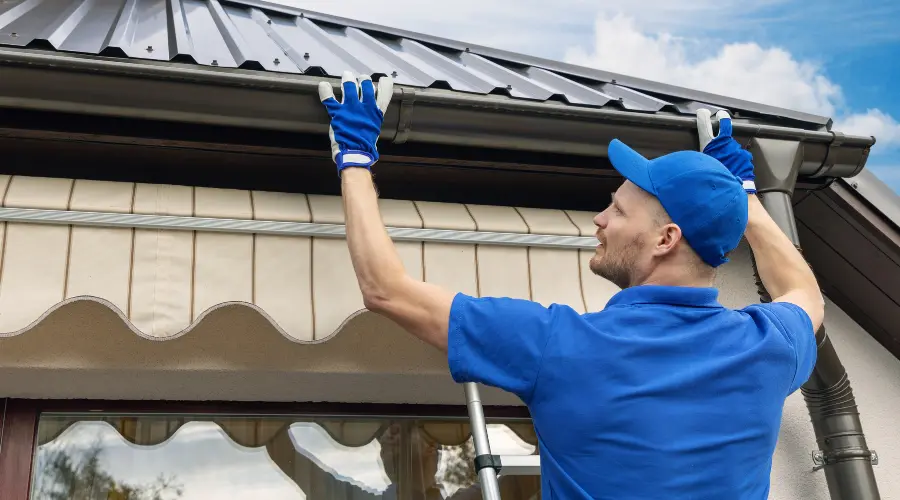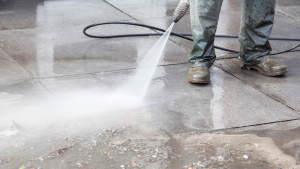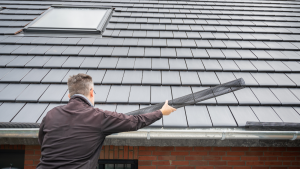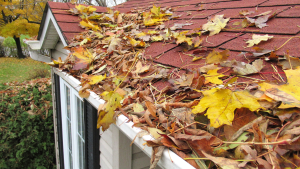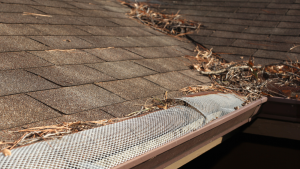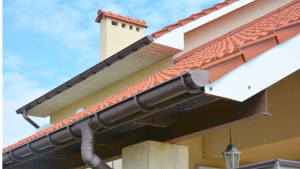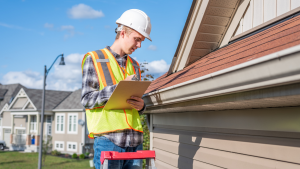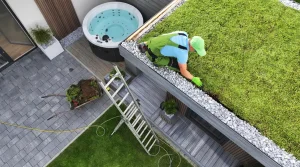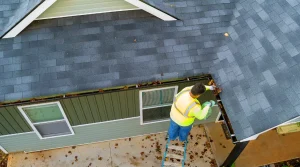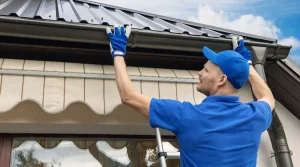Maintaining your home’s gutter system is crucial to prevent water damage and preserve structural integrity. Neglecting gutters can lead to costly repairs and health hazards.
Key Takeaways:
- Importance of Functional Gutters: Properly maintained gutters are essential for directing rainwater away from your home’s foundation, walls, and landscaping, preventing costly water damage.
- Common Gutter Issues: Regular inspections can help identify problems such as leaks, clogs, sagging, and rust, which, if addressed promptly, can prevent more severe damage.
- DIY Maintenance Tips: Homeowners can undertake tasks like cleaning gutters, sealing minor leaks, and tightening loose brackets to maintain gutter functionality.
- When to Seek Professional Help: For extensive damage or complex repairs, it’s advisable to consult professional gutter repair services to ensure effective and safe solutions.
Understanding the Importance of Functional Gutters
Gutters play a vital role in channeling rainwater away from your home’s foundation, walls, and landscaping. Without efficient water diversion, your property becomes susceptible to issues such as foundation cracks, basement flooding, and soil erosion. Moreover, stagnant water resulting from clogged or damaged gutters can foster mold growth, posing health risks to occupants.
Common Gutter Problems and Their Implications
- Clogs and Blockages: Accumulated debris like leaves and twigs can obstruct water flow, causing gutters to overflow. This overflow can damage siding, erode soil, and lead to basement leaks.
- Leaks and Holes: Over time, gutters may develop small holes or cracks due to rust or physical damage. Even minor leaks can allow water to seep into walls and foundations, leading to structural issues.
- Sagging Gutters: Excess weight from debris or standing water can cause gutters to sag or pull away from the house. This misalignment disrupts proper water flow and can damage the fascia boards and roof structure.
- Improper Slope: Gutters need a slight slope to direct water toward downspouts. An incorrect pitch can result in standing water, increasing the risk of rust and leaks.
DIY Gutter Maintenance and Repair Tips
Regular maintenance can extend the lifespan of your gutters and prevent potential damage. Here are some actionable steps homeowners can take:
- Regular Cleaning: Clean your gutters at least twice a year, preferably in spring and fall. Remove leaves, twigs, and other debris to ensure unobstructed water flow.
- Inspect for Damage: After cleaning, inspect your gutters for signs of wear, such as rust spots, holes, or cracks. Early detection allows for prompt repairs, preventing more significant issues.
- Seal Leaks: For small holes or cracks, apply a gutter sealant to the affected area. Ensure the gutter is dry before application for optimal adhesion.
- Tighten Loose Brackets: Check for any loose or missing gutter hangers or brackets. Secure them to maintain the proper alignment and prevent sagging.
- Ensure Proper Slope: Use a level to check the gutter’s pitch. Adjust as necessary to ensure water flows toward the downspouts without pooling.
- Install Gutter Guards: Consider adding gutter guards to reduce debris accumulation, minimizing the frequency of cleanings.
When to Call in Professionals
While DIY maintenance is beneficial, certain situations warrant professional intervention:
- Extensive Damage: If gutters have significant rust, large holes, or are detaching from the house, professional repair or replacement is advisable.
- Complex Repairs: Issues like improper installation, complex rooflines, or problems with the fascia may require specialized tools and expertise.
- Safety Concerns: If your home is multi-storied or you’re uncomfortable working on a ladder, it’s safer to hire professionals equipped to handle the job.
Frequently Asked Questions (FAQ)
Q1: How often should I clean my gutters?
It’s recommended to clean your gutters at least twice a year, in spring and fall. However, if you have overhanging trees or experience frequent storms, more frequent cleanings may be necessary.
Q2: What are the signs that my gutters need repair?
Indicators include visible cracks or holes, sagging sections, peeling paint on your home’s exterior, water stains or mildew near the foundation, and overflowing during rain.
Q3: Can I repair a leaking gutter myself?
Yes, minor leaks can often be repaired by cleaning the area and applying a gutter sealant. For larger holes or extensive damage, it’s best to consult a professional.
Q4: What are gutter guards, and should I install them?
Gutter guards are protective covers that prevent debris from entering the gutter system. Installing them can reduce maintenance and prevent clogs, but they may not eliminate the need for occasional cleaning.
Q5: How can I improve the lifespan of my gutters?
Regular maintenance, prompt repairs, ensuring proper installation, and installing gutter guards can all contribute to extending the lifespan of your gutter system.
Q6: What should I do if my gutters are sagging?
Sagging gutters often result from excess weight or loose brackets. Check for clogs causing water buildup and clean the gutters. Tighten or replace loose brackets to restore proper alignment.
Q7: Is professional gutter cleaning worth it?
Professional gutter cleaning ensures thorough debris removal and inspection for potential issues. It’s especially beneficial for multi-story homes or if you prefer to avoid the risks associated with ladder work.
Q8: How do I know if my gutters are properly sloped?
Properly sloped gutters should direct water toward the downspouts without pooling. A general guideline is a slope of about 1/4 inch for every 10 feet of gutter. If water stands still after rain, adjusting the pitch may be necessary.
Q9: Can clogged gutters affect my home’s foundation?
Yes, clogged gutters can cause water to overflow, leading to

